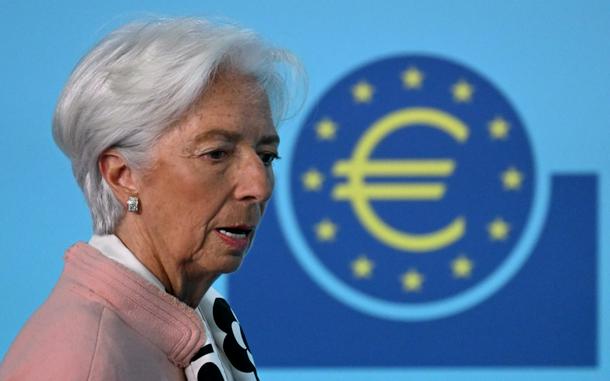
Christine Lagarde warned about the impact of Trump tariffs on euzone growth
Frankfurt (Germany) (AFP) - The European Central Bank cut interest rates again Thursday amid fears that US President Donald Trump’s stop-start tariff announcements could threaten growth across the eurozone.
Rate-setters were operating in a context of “exceptional uncertainty” amid rising trade tensions, ECB President Christine Lagarde said at a press conference.
Trump’s tariffs have increased the risk that growth could slow in the eurozone, while their impact on inflation was “less than clear”, Lagarde said.
Amid the turmoil, the ECB decided to lower interest rates by a quarter point, the sixth consecutive time it has moved to ease borrowing costs.
The cut left the benchmark deposit rate at 2.25 percent, the lowest it has been since in the beginning of 2023.
The ECB has swiftly reduced interest rates since the middle of last year, as inflation has drifted back towards the central bank’s target of two percent.
Consumer prices rose at a 2.2 percent clip in March in the eurozone, with the ECB saying the process of inflation coming down was “well on track”.
But Trump’s threats to impose swingeing tariffs on global imports into the United States had led to a “major escalation” in trade tensions, Lagarde said.
The resulting economic uncertainty was “likely to reduce confidence among households and firms”, the ECB said, while market tensions would lead to tighter financing conditions.
- Inflation uncertainty -
Thursday’s cut “came as little surprise”, ING bank analyst Carsten Brzeski said.
US tariffs had “brought back growth concerns for the eurozone… in the near term”, Brzeski said, prompting the ECB to support households and businesses by further lowering interest rates.
Going into this week’s meeting, ECB policymakers had little idea what tariff rates will eventually apply to transatlantic trade.
The US president spooked global markets with the unveiling of “Liberation Day” tariffs at the beginning of April, before promptly pausing higher duties for dozens of countries, including those of the European Union, for 90 days.
A basic 10 percent tariff rate on imports into the United States remains in place, and Trump has also imposed 25 percent levies on the automotive, steel and aluminium sectors.
“Global trade tensions and associated uncertainties will likely lower euro area growth,” Lagarde said, though the impact was less clear for inflation.
Among the potential effects was the possibility that China, which has faced some of the highest US tariffs, could divert goods to Europe.
This combined with the strength of the euro against the dollar “suggests that price pressures in the euro area are likely to ease further”, said LBBW bank analyst Jens-Oliver Niklasch.
- ‘Agile’ -
Trade tensions were “clearly offsetting previous optimism” stemming from plans in Germany, the largest member of the eurozone, to open the spending taps, Brzeski said.
The incoming government in Berlin led by Friedrich Merz has lined up hundreds of billions of euros in extra cash for defence and infrastructure, providing a boost that could be felt across Europe.
The increased investments could “bolster manufacturing” and add to growth across the eurozone, Lagarde noted.
But given the geopolitical tensions it was “even more urgent” to forge ahead with fiscal and structural policies that would make the eurozone more “productive, competitive and resilient”, she said.
The large number of open questions arising from global trade tensions meant the ECB would have to be more “agile” than ever in responding to developments, she said.
“We have to stand ready for the unpredictable,” Lagarde said, doubling down on the ECB’s “data-dependent and meeting-by-meeting” approach.
While Lagarde played her cards close to her chest regarding future rate decisions, analysts said the door was open for the ECB to lower its interest rates further.
Thursday’s cut was a signal that the ECB was “ready to take action to counter the uncertainty in the financial markets”, Niklasch said.
“We now expect two further interest rate cuts of the same magnitude as today’s by the end of the year,” he said.